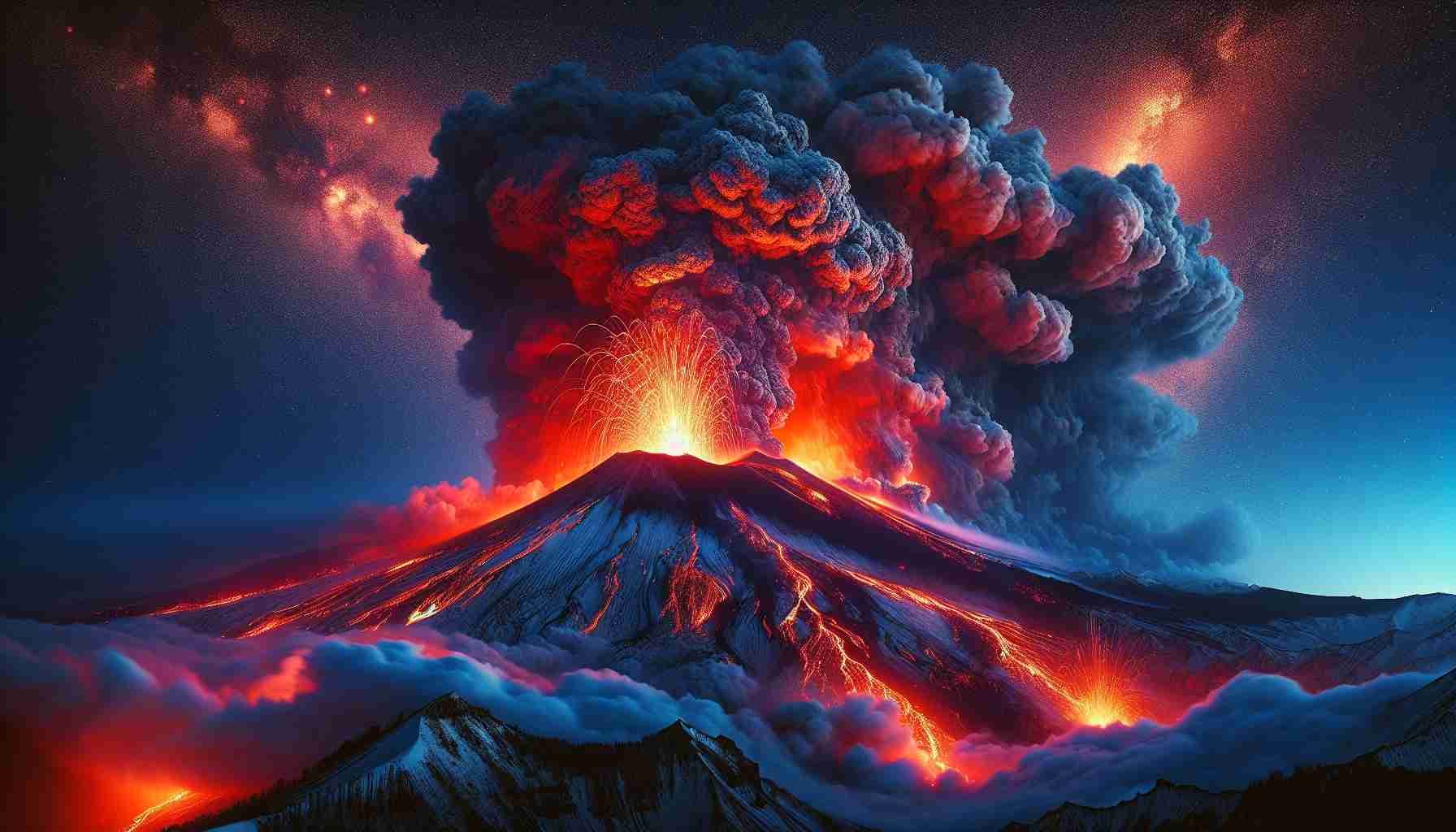- Mount Etna’s recent eruption showcases a stunning contrast of fiery lava on its snowy peak, creating a dramatic natural spectacle.
- Despite increased volcanic activity, including ash clouds and minor explosions, local communities remain safe and unaffected.
- Etna’s periodic eruptions are a familiar occurrence, forming part of Sicily’s annual natural narrative.
- In July, the volcano’s activity briefly disrupted air travel, highlighting the balance locals maintain with this natural wonder.
- The enduring relationship between people and Etna exemplifies resilience and adaptability to nature’s dynamic forces.
The luminous glow of fiery lava cascading down Mount Etna’s snowy apex transforms the Sicilian landscape into a dramatic theater of nature. Standing majestically at 3,000 meters, this sleeping giant has returned to life, its molten rivers tearing through the icy canvas from a yawning fissure on its southeastern flank. The dazzling contrast of glistening snow beneath the molten glow captivates all who behold it, painting the scene with hues of autumn at winter’s stage.
In recent days, this iconic European colossus has rumbled with increased vigor, releasing sporadic clouds of ash into the sky. The air vibrates with the echoes of minor explosions, as the volcano dances to its own primordial rhythm. While the spectacle might seem menacing, volcanologists assure that local communities and cultivable land remain unthreatened. This dramatic resurgence is but a familiar tune for Etna, whose eruptions weave into the island’s yearly narrative.
Back in July, Etna’s impromptu performance left thousands of travelers momentarily stranded, as flights stuttered amidst nature’s fiery display. Yet, for many residents, these eruptions weave a tapestry of life on an unforgiving, yet breathtaking, landscape. This harmonious relationship between man and volcano persists, defying danger and embracing Etna’s unpredictable charm.
The takeaway? Despite Etna’s fiery demonstration, life carries on undisturbed, illustrating the delicate and enduring rapport between humanity and nature’s volatile temperaments. As Etna roars, it invites us to witness the sublime power and beauty of our planet, reminding us of our resilience and adaptability amid nature’s eternal dance.
Unveiling Mount Etna: Nature’s Spectacle and Human Adaptation
How-To Steps & Life Hacks: Witnessing Mount Etna’s Eruptions Safely
To safely experience the awe-inspiring spectacle of Mount Etna’s eruptions, follow these steps:
1. Stay Informed: Check for the latest eruption updates and safety advisories from local authorities or organizations like the INGV (Italian National Institute of Geophysics and Volcanology).
2. Choose a Safe Vantage Point: Visit designated viewing areas recommended by local guides where you can have a safe and clear view of the eruption.
3. Gear Up Properly: Wear appropriate clothing for cold weather, carry binoculars for a closer view, and ensure you have dust masks and protective eyewear in case of ash fall.
4. Hire a Guide: Consider hiring experienced local guides who can provide historical context and ensure your safety.
5. Respect Safety Zones: Do not attempt to get too close to the eruption despite its fascinating visual appeal. Stay within defined safe zones.
Real-World Use Cases: Life Around Mount Etna
Living near Mount Etna poses unique challenges and opportunities:
– Agriculture: The volcanic soil is highly fertile, supporting crops like grapes, olives, and citrus fruits. This has led to a thriving wine industry in the region.
– Tourism: Etna offers ski resorts, hiking trails, and guided tours to tourists eager to witness its eruptions, boosting the local economy.
Market Forecasts & Industry Trends: Opportunities from Volcanic Activity
The allure of volcanic vistas has bolstered tourism and economic growth in Sicily. Rising interest in eco-tourism and adventure tourism points to a positive trend for the local economy. Analysts predict a potential 5% increase in tourist visits annually as Mount Etna attracts more nature enthusiasts and adventure seekers.
Reviews & Comparisons: Other Volcanic Experiences
– Kilauea, Hawaii: Compared to Mount Etna, Kilauea offers a steady flow of lava, creating a lunar-like landscape. Both offer safe, organized viewing experiences, though Etna’s eruptions are more sporadic.
– Mount Vesuvius, Italy: Known for its infamous historic eruption, Vesuvius offers more subdued activity presently but is culturally significant and easily accessible.
Controversies & Limitations: Navigating Nature’s Power
While Mount Etna rarely threatens Sicilian inhabitants directly, its eruptions can disrupt air travel and displace ash over wide areas. Ongoing monitoring and preparation are crucial in mitigating these disturbances.
Pros & Cons Overview
Pros:
– Unique ecosystem and fertile volcanic soil
– Source of renewable geothermal energy
– Attracts global tourists and supports local businesses
Cons:
– Potential for aviation disruption
– Possible health risks from ash inhalation
– Volatile behavior requires constant vigilance
Security & Sustainability: Co-existing with Etna
– Monitoring Technology: Advanced seismic equipment monitors Etna’s activity, aiding in timely evacuations and safety measures.
– Sustainable Tourism: Efforts are focused on balancing visitor numbers with conservation to preserve the area’s natural beauty and biodiversity.
Actionable Recommendations
– For Adventurers: Plan visits in spring or autumn, when the climate is mild, and the risk of disturbance from eruptions is lower.
– For Local Authorities: Continue investing in early warning systems and community outreach to enhance public safety.
For more information about visiting Sicily and experiencing Mount Etna, visit the official tourism site for additional tips and guidance.
Embrace the breathtaking beauty of Mount Etna while remaining aware and respectful of its might. Rediscover our planet’s potent forces and the power of harmonizing our lives with nature’s rhythms.
